Port terminals can benefit enormously from simulation training as they continue to develop and evolve.
A growing trend for automation in port terminals has led to a higher demand for skills, which some ports are struggling to meet.
But, productivity can actually drop at the ports that adopt automation if they are unable to match capabilities with their resources.
At the same time, the increased sophistication of port terminal operations can pose safety risks if the operators are not sufficiently trained to deal with new technologies and procedures.
What simulation-based training in port terminals offers is a means to upskill employees rapidly without depending on live equipment, whether this is training new staff or refreshing the skills of experienced workers.

Contents
- Port Equipment Training Simulators
- Quayside Crane Simulation Training Solutions
- Yard side Equipment Training Simulations
- Port Simulator Hardware Platforms
- Remote Training Tools
- Conclusion
Port Equipment Training Simulators
Simulation-based training solutions for port terminals such as quayside crane simulators, yard side equipment training simulators and port simulator hardware platforms offers port terminals a flexible, dynamic training approach to train their employees effectively, efficiently and safely with increased productivity.
Quayside Crane Simulation Training Solutions
Efficient and safe ship-to-shore crane operations are fundamental to the success of a port.
What simulation-based training provides is a solid grounding in knowledge and techniques before the trainee operator comes into contact with real-world equipment.
Quayside crane simulation-based training solutions include:
- Ship-to-shore crane
- Mobile harbour crane
- Ship pedestal crane
These simulation training packages help trainees acquire the critical skills they need to handle crane equipment.
Training exercises include lifting and loading, managing multiple loads and negotiating various faults, snags and obstacles.
The quay side training simulators offer flexibility, so that instructors can tailor exercise sequences and customise benchmarks to match individual learning needs.
Simulation-based training for cranes offers true-to-life scenarios, based on specifications, load charts and other information that comes from manufacturers.
This helps to create a realistic learning environment that prepares trainees for real-life operations in port terminals.
MORE ABOUT QUAYSIDE CRANE SIMULATORSYard side Equipment Training Simulations
Training simulators can simulate the entire operations of a port terminal, including the container yard.
The skills required for efficient, safe and effective working in the yard side environment are no less critical for the productivity and safety of the port as quayside operations.
Important areas for training are:
- Horizontal transport handling
- Container handling and stacking
- Loading and unloading
Yard side simulation-based training solutions include training packs for:
- Internal transfer vehicle
- Forklift
- Rubber-tyred gantry crane
- Straddle carrier
- Reach stacker
- Empty container handler
As well as learning basic vehicle skills, trainees can familiarise themselves thoroughly with the demands and realities of handling operating equipment.
The simulation-based training recreates a busy port environment, and trainees can run repeated exercises to hone their skills.
The yard side equipment simulators offer all the benefits of hands-on practice, with none of the risks or resource issues of real-world training.
 MORE ABOUT YARD SIDE EQUIPMENT SIMULATORS
MORE ABOUT YARD SIDE EQUIPMENT SIMULATORS
Port Simulator Hardware Platforms
Vortex simulator hardware platforms from CM Labs provide scalable simulation-based training solutions for port terminals, with swappable controls, flexible configuration options, and industrial-grade hardware.
They range from entry-level desktop training to versatile training stations and immersive simulation-based training.
1 - Vortex Trainer
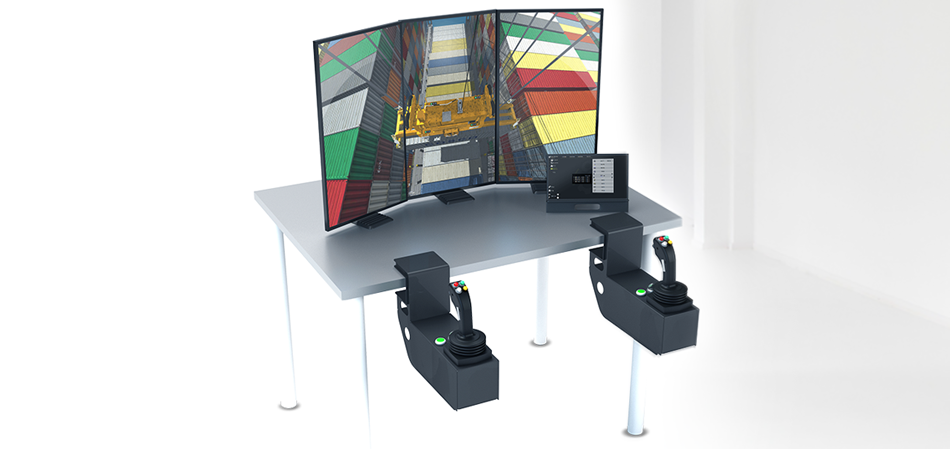
Vortex Trainer is a three-screen desktop simulation platform that bridges the gap between a classroom and the workplace.
It is a highly versatile and adaptable means of adding simulation training to existing workflows and training programmes.
It also enables ports that already have simulation integrated into their training to expand their offering.
Vortex Trainer is portable and flexible for users, enabling port terminals to initiate and deploy simulation-based training programmes rapidly and effectively.
It also enables multiple operators to train simultaneously, further accelerating skills development for increased productivity.
Vortex Trainer has robust steel components, industrial-grade controls and pedals based on the specifications of port equipment manufacturers.
2 - Vortex Advantage
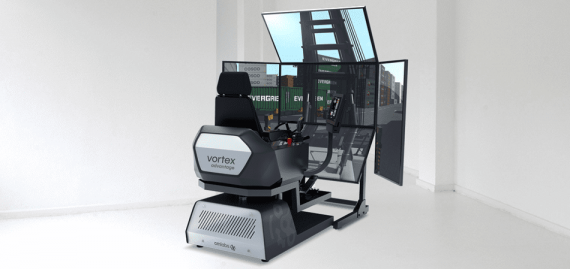
Designed for maximum flexibility in training, Vortex Advantage offers a step up from desktop simulation.
It has a durable steel frame, professional grade controls, shock-mounted computers and an optional rotating motion platform.
The view from the cab on the Vortex Advantage matches the view from real equipment.
There are several display options, from single to three-screen, and even a five-screen option for deeper immersion.
The motion platform replicates the movement and vibration when loading, lifting and manoeuvring.
Vortex Advantage has an intuitive touchscreen interface and a dashboard for the operator.
3 - Vortex Master
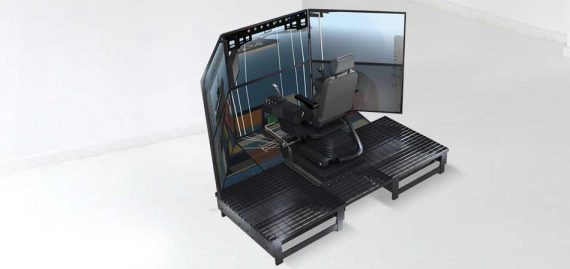
Vortex Master is a full-suite training simulator, providing highly-realistic simulation environments and controls for trainee operators.
It has multiple, scalable screen configurations, ranging from nine to 13 displays.
Its adjustable seat is the same as that used in real equipment, and it provides 360-degree movement.
While Vortex Master is an advanced simulator, it is still a flexible and adaptable one.
Its features include swappable control pedals and sets, for accurate, equipment-specific training.
Training experiences with the Vortex Master are engaging and immersive, helping users gain and retain essential skills.
It includes motion platforms, as well as authentic equipment and environmental sounds via its integral surround-sound.
As an all-in-one platform for simulation-based port training, Vortex Master helps make the transition from the classroom to real-life operations a seamless one.
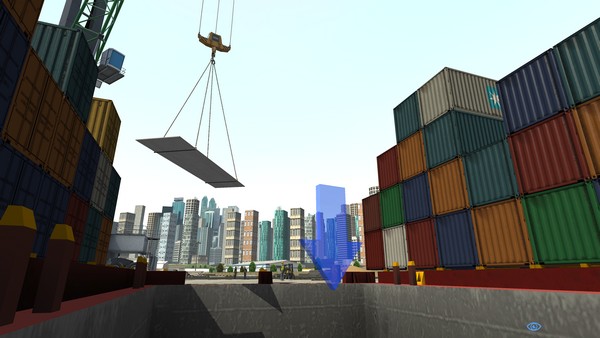
Remote Training Tools
The spread of automation in port terminals has made operator training for remote-controlled cranes and equipment a priority.
Simulation-based training offers rapid engagement and learning processes for both operators and instructors, readying them for the modern, automated port terminal.
1 - Instructor Operating Station (IOS)
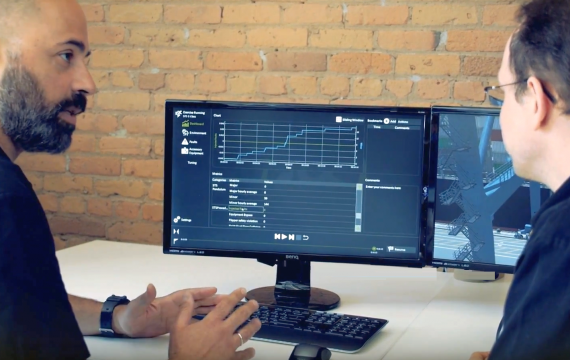
IOS is an advanced operating tool for instructors, enabling them to initiate, monitor and measure exercise sessions that trainees undergo.
It gives the instructor an at-a-glance monitoring capability and allows them to adapt exercise programmes to suit the individual needs of the trainee.
Drawing on detailed performance analytics, the instructor can generate regular reports after each training exercise, pinpointing areas for further improvement and development.
The Exercise Builder option in IOS gives instructors the capability to define tasks and parameters for trainees, creating unlimited updates to existing exercises.
Instructors can use Exercise Builder to specify:
- Vessel type
- Container type
- Loading or unloading operations
- The container origin or destination
All this makes Instructor Operator Station effective in tailoring simulation-based training for individual requirements.
The customisable benchmarking and scoring provided by IOS also supports organisational overviews of training needs, enabling ports to raise skill levels, and productivity, through focused learning.
This enhanced training capability, which enables widespread adaptive learning, is ideal for port terminals looking to match their capabilities with the competitive demands of automated operations.
2 - Remote Operating Station (ROS)
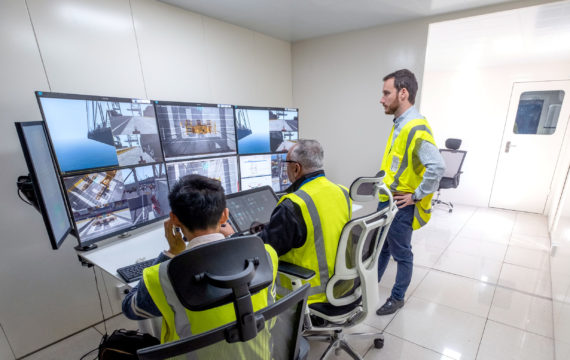
Automated, remote-operated crane equipment is helping to unlock productivity in ports by streamlining operations and speeding up processes - even with extra-large cranes.
However, this increasingly sophisticated equipment requires thorough training, which can take time, and potentially put the brakes on productivity.
To maximise the advantages that automation can bring, ports need to speed up the training process. Remote Operating Station provides this solution, using desktop simulation-based training. It enables trainees to become proficient at remote equipment operations within a simulated control room environment.
As a training platform, ROS is sophisticated and technically advanced, but also intuitive and accessible. It can rapidly train users to levels that then make them much better prepared for training on real equipment.
Although ROS is a desktop-based training simulator, it is designed to integrate with manufacturers’ original equipment control systems.
This positions it as a unique training tool, combining adaptability and flexibility with hi-fidelity, true-to-life training.
Conclusion
Adaption to modern technologies is a challenge for port terminals.
The biggest barrier they face to increased productivity through automation is a shortage of skills and expertise in both operators and instructors.
Simulation-based training offers a means of removing this barrier, by initiating adaptive learning programmes and rapidly accelerating training processes.
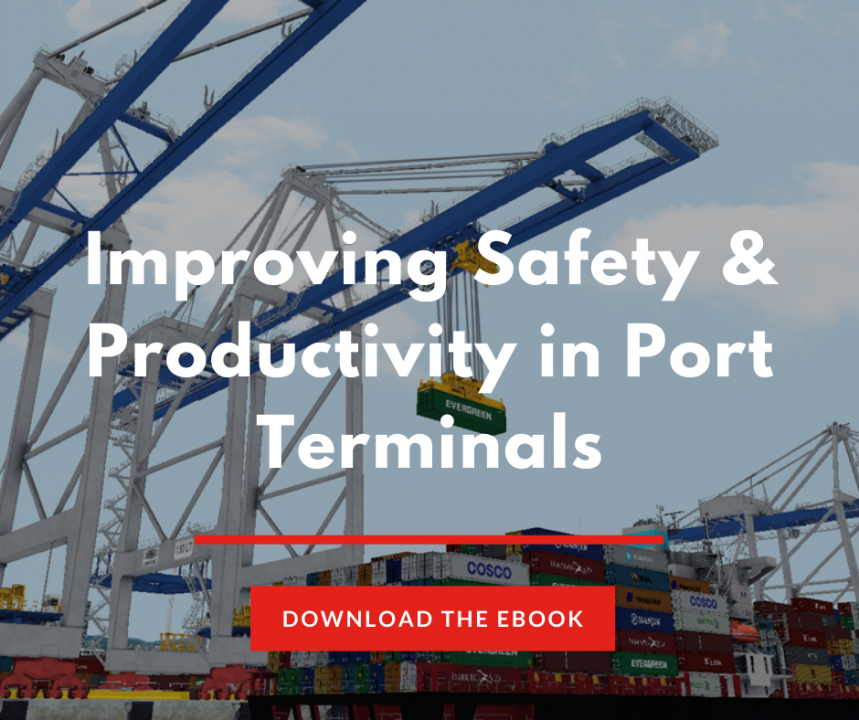
Port terminals must evolve, but the skill levels of their workforces and their training requirements must also adapt to the new realities of a busy sector.
The results speak for themselves:
- Port of Tilbury uses Vortex simulator to revolutionise their approach to monitoring, measuring, and increasing productivity.
- 33 per cent faster training of operators at Ports of Auckland.
- 40 per cent increase in trainees meeting and exceeding required operational standards at Flinders Adelaide Container Terminal.
- 50 per cent reduction in training time and a 150 per cent increase in successful operator training at DP Worldwide Melbourne.
At ST Engineering Antycip, we deliver simulation based training solutions for the maritime, ports and offshore sector for clients across Europe, that allow them to train novices and experienced operators alike for increased safety and efficiency, in a risk-free learning environment.
For more information about simulation-based training solutions for port terminals, please don’t hesitate to contact us.




















